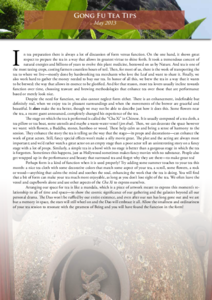
 |
|
In tea preparation there is always a lot of discussion of form versus function. On the one hand, it shows great respect to prepare the tea in a way that allows its greatest virtue to shine forth. It took a tremendous concert of natural energies and billions of years to evolve this plant medicine, bestowed on us by Nature. And tea is one of the most taxing crops, costing farmers countless hours of toil. Then, for most of us, there is the work of transporting the tea to where we live - mostly done by hardworking tea merchants who love the Leaf and want to share it. Finally, we also work hard to gather the money needed to buy our tea. In honor of all this, we brew the tea in a way that it wants to be brewed: the way that allows its essence to be glorified. And for that reason, most tea lovers usually incline towards function over time, choosing teaware and brewing methodologies that enhance tea over those that are performance based or merely look nice. Despite the need for function, we also cannot neglect form either. There is an enhancement, indefinable but definitely real, when we enjoy tea in pleasant surroundings and when the movements of the brewer are graceful and beautiful. It does make the tea better, though we may not be able to describe just how it does this. Some flowers near the tea, a recent guest announced, completely changed his experience of the tea.

The stage on which the tea is performed is called the "Cha Xi" in Chinese. It is usually composed of a tea cloth, a tea pillow or tea boat, some utensils and maybe a waste-water vessel (jen shui). Then, we can decorate the space however we want: with flowers, a Buddha, stones, bamboo or wood. These help calm us and bring a sense of harmony to the session. They enhance the story the tea is telling us the way that the stage - its props and decorations - can enhance the work of great actors. Still, fancy special effects won't make a silly movie great. The plot and the acting are always more important; and we'd rather watch a great actor on an empty stage than a poor actor tell an uninteresting story on a fancy stage with a lot of props. Similarly, a simple tea in a bowl with no stage is better than a gorgeous stage in which the tea is forgotten. Sometimes this happens, just as Hollywood sometimes makes fancy movies with no substance. People also get wrapped up in the performance and beauty that surround tea and forget why they are there - to make great tea!

Perhaps form is a kind of function when it is used properly? Try adding some summer touches to your tea this month: a nice tea cloth with some decorative colors that match some aspect of your tea, a scroll, some flowers, a rock or wood - anything that calms the mind and soothes the soul, enhancing the work that the tea is doing. You will find that a bit of form can make your tea much more enjoyable, as long as you don't lose sight of the tea. We often leave the vessel and cups/bowls alone and use other aspects of the Cha Xi to express ourselves.
Arranging our space for tea is like a mandala, which is a piece of artwork meant to express this moment's relationship to all of time and space - to show the cosmic significance of our gathering and the galaxies beyond all our personal drama. The Dao won't be ruffled by our entire existence, and even after our sun has long gone out and we are but a memory in space, the stars will still wheel on and the Dao will embrace it all. Allow the smallness and ordinariness of your tea session to resonate with the greatness of Being and you will have found the function in the form!